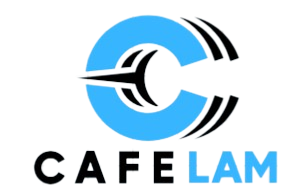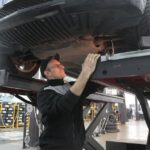When it comes to maintaining the integrity of a commercial property, roof repair is a critical focus area. Neglecting roof issues can lead to significant damage, costly repairs, and even safety hazards.
Business owners often face tough challenges with roofing issues. These can include leaks, punctures, and more.
Addressing these issues promptly not only extends the lifespan of the roof but also safeguards the property and its occupants. Understanding how to identify roofing problems and implement effective solutions is key to preventing larger complications down the road.
Types of Common Roof Damage
The types of roof damage that commercial properties frequently encounter are varied. Some of the most notorious issues include:
Leaks
Leaks often happen in roofs. They usually come from old materials or seams that break down over time. This wear can be due to harsh weather, like heavy rain, hot sun, or freezing temperatures.
Blisters
Blisters are bubbles that form on the roofing surface when moisture becomes trapped beneath. This can occur when water seeps under the roofing material, often due to faulty installation or inadequate drainage. As the trapped moisture heats up, it expands, creating pressure that pushes the roofing material upwards, forming a blister.
Punctures
Punctures are holes or tears in roofing material. They can happen due to debris, foot traffic, or severe weather. These damage the materials’ integrity. Debris, such as tree branches or rocks, can puncture the roof during strong winds or storms.
Membrane Damage
Membrane damage often happens in single-ply roofs. Over time, the membrane can become brittle and crack. This is usually caused by heat, UV rays, or harsh chemicals. As the membrane cracks, it can allow water to seep into the roof’s structure, causing damage to the building.
Standing Water
Standing water is a result of poor drainage systems, causing water pooling, which can weaken roofing materials. When water accumulates on the roof, it can seep into the building, causing damage to the walls, floors, and ceilings.
Over time, standing water can also lead to the growth of mold and mildew, posing health risks to occupants. For example, a clogged drainage system on a flat roof can cause water to accumulate, leading to standing water issues. This can be prevented by ensuring that the drainage system is clear and functioning properly.
Understanding the Cause of Roof Issues
Realizing that roof issues don’t just happen randomly is crucial. Most problems arise from specific causes:
Weather Conditions
Harsh weather, such as heavy rain, snow, hail, and high winds, can take a toll on roof structures. Traditional roofing materials may degrade quickly under severe conditions. For instance, frequent hailstorms can lead to punctures and blisters that compromise your roof’s functionality.
Poor Installation
If a roof isn’t installed correctly, problems will appear sooner rather than later. Quality installation can affect everything from waterproofing to the overall durability of the roof. Engaging with experienced professionals is paramount to ensure installation adheres to manufacturer specifications and local building codes.
Lack of Maintenance
Routine inspections and maintenance are often overlooked, leading to a slow deterioration that can cause significant issues. Simple tasks, such as cleaning gutters and clearing debris, can enhance a roof’s longevity and effectiveness. Statistically, regular maintenance can extend a roof’s life by up to 50%.
Recognizing the Signs of Roof Damage
Early detection is a game-changer when it comes to roof repair. Here are key warning signs business owners should be aware of:
- Water stains on ceilings or walls
- Excessive granule loss from shingles
- Visible cracks in roof surfaces.
- Pooling water on flat roofs.
Effective Solutions to Common Roof Problems
Addressing roof issues immediately can prevent them from escalating. Here are some solutions commonly employed:
Sealing and Coatings
For minor leaks or punctures, applying sealants and coatings can provide effective temporary solutions. These materials fill gaps and create a waterproof barrier that prevents further damage. However, this should only be a stop-gap solution while planning for a more permanent fix.
Flashing Installation
Flashing that’s installed correctly around chimneys, vents, and edges helps reduce leaks and keeps out water. Using good flashing materials stops leaks and makes these weak spots last longer.
Regular Inspections and Maintenance
Establishing a routine inspection schedule helps identify potential issues before they escalate. Partnering with experts in commercial roofing in San Antonio gives you insights into your roof type. They help identify unique weaknesses, keeping your property safe.
The Cost of Roof Repairs
Understanding the financial implications of roof repair is essential for effective budgeting. Factors affecting the cost include:
Type of Damage
Minor repairs like sealing small leaks will generally be less expensive than more extensive damage like a roof replacement. A simple repair costs about $300 to $400. In contrast, major roof damage can average over $1,500. The exact price depends on how severe the problem is.
Roofing Material
Different roofing materials have varying costs associated with repairs. For example, asphalt shingles may cost less to repair than metal roofs or single-ply membranes. Understanding your roof’s material can provide better insight into expected repair costs.
Choosing the Right Roofing Contractor
Selecting a qualified roofing contractor is vital in ensuring high-quality repair work and avoiding future problems. Look for contractors with a proven track record in commercial roofing.
Research customer feedback to gauge reliability and service quality. Ensure the contractor holds proper licenses and insurance to avoid liabilities.
Long-Term Strategies for Roof Maintenance
Implementing long-term strategies for maintenance will save money and prevent emergencies. Some essential strategies include:
Scheduled Inspections
To avoid costly repairs down the line, it’s essential to conduct regular inspections of your roof at least twice a year. Routine checks can spot wear and tear early. Look for loose or missing shingles, cracked flashing, or rusted metal parts.
Implementing Drainage Systems
A good drainage system stops water from pooling on your roof. This helps keep your roof strong over time. It can seep into the roofing material, causing erosion, rotting, and damage to the underlying structure.
Protecting Your Investment with Roof Repair
Understanding common commercial roof repair issues and their solutions is essential for any business owner. By recognizing signs of damage early, investing in proper maintenance, and working with experienced professionals for repairs, you greatly enhance your property’s resilience against the elements.
Effective roof repair not only protects your investment but also ensures the safety and comfort of your occupants. Don’t wait for a small problem to turn into a major expense.
Take action now to safeguard your commercial property and extend the lifespan of your roof.







